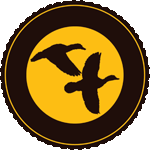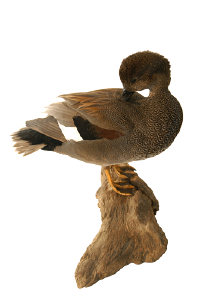Specimen Care in the Field
Rule Number One is: The better the bird is taken care of in the field, the more likely it will result in a quality mount. The moment a potential trophy bird is taken is when the utmost care for taxidermy starts.
To find out why this is important, read Rob's interview in the November 2010 issue of Wildfowl Magazine: "How To Keep Your Bird In Top Shape for the Taxidermist."
Once you have shot a potential trophy bird:
If at all possible, obtain mature individuals late in winter.
We all love dogs and they enrich our hunts and lives in many ways, but unless your retriever has a very soft mouth, try to retrieve the potential trophy bird yourself. If your bird is a dove or quail, definitely keep dogs from even touching it.
DO NOT wring the bird’s neck or carry it by the neck. Carry it by the feet or cradle the body while retrieving. If the bird is not yet dead, place it on its chest and apply pressure to its back with your knee until it is deceased. This method is quick, humane, and should not damage feathers.
Stuff a cotton ball in the bird’s bill and on shot holes. Blood on feathers will be removed during mounting, but keeping it off feathers is even better.
Keep bird(s) cool, and freeze or put on ice ASAP.
As soon as you return from the field:
To package for freezing, tuck the bird’s head under a wing (if possible, a wing without blood on it) or over the back, and place in a Ziploc Freezer Bag. Place in freezer. DO NOT wrap in newspaper OR pantyhose. Newspaper ensures rapid freezer burn and pantyhose cause feather damage.
Get the bird(s) to us ASAP. The quicker we get it/them, the better the bird(s) will look when mounted, and the quicker you’ll get it back.
Not every bird is mountable.
Some may be too badly damaged from wounds, resulting in excessive feather loss. However, broken wings and other bones, as well as broken bills and feet are usually not a problem.
Others may have pinfeathers, which are developing immature feathers not yet fused to the skin. Pinfeathers may fall out during the mounting process, resulting in a mount that looks as though it was partially plucked, giving a poor result. Pinfeathers are present when birds replace their feathers at least once a year in a process called moulting. This occurs anywhere from late June though late October. This is why the best candidates for a quality mount are taken in middle to late winter when the moulting process is mostly complete.
Found a dead bird?
Can you get it mounted? Rob answers your taxidermy questions here.

